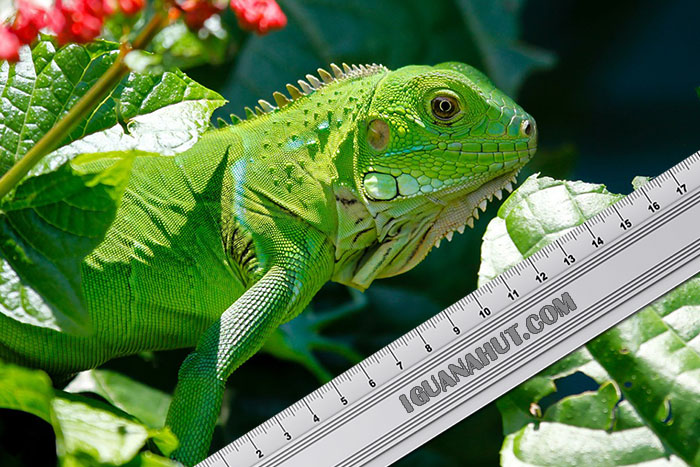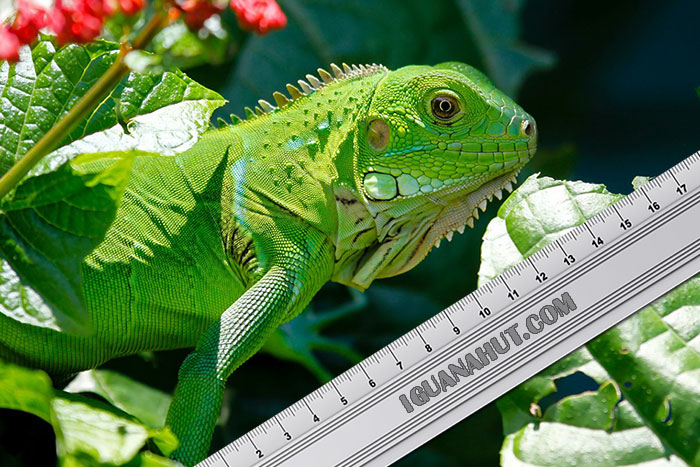Iguanas are fascinating creatures that are known for their unique appearance and behavior. They are one of the most popular reptile pets and are also found in the wild in many parts of the world. One of the questions that many people have about iguanas is how fast they grow. In this article, we will explore the growth rate of iguanas and what factors affect their growth.
Iguanas can grow to be quite large, with some species reaching lengths of up to six feet. However, their growth rate varies depending on a number of factors, including their age, diet, and environment. Understanding how these factors impact the growth of iguanas can help pet owners and researchers alike better care for these fascinating creatures.
Iguanas grow at different rates depending on their species, diet, and environment. On average, iguanas can grow up to one foot per year during their first two years of life. However, their growth rate slows down as they reach maturity. Some iguanas can reach up to 6 feet in length, but this can take several years. It’s important to provide them with a healthy diet and proper habitat to ensure their growth and overall well-being.

How Fast Do Iguanas Grow?
Iguanas are fascinating creatures that have become popular pets. They are known for their unique appearance and behavior. One of the most frequently asked questions about iguanas is how fast they grow. The growth rate of iguanas depends on several factors, such as their age, health, and diet. In this article, we will discuss the growth rate of iguanas and what factors affect their growth.
Factors Affecting the Growth of Iguanas
The growth rate of iguanas depends on several factors, including their age, sex, genetics, health, and diet. Younger iguanas tend to grow faster than older ones. Female iguanas also tend to grow faster than males. Genetics also play a significant role in the growth rate of iguanas. Some iguanas are genetically predisposed to grow faster than others.
Health is another critical factor that affects the growth rate of iguanas. If an iguana is sick or malnourished, it will not grow as quickly as a healthy iguana. Finally, diet is a crucial factor that affects the growth rate of iguanas. A balanced diet that provides all the necessary nutrients is essential for healthy growth.
The Growth Rate of Baby Iguanas
Baby iguanas grow rapidly, and their growth rate varies depending on their age. During the first six months of their life, they can grow up to an inch per week. By the end of their first year, they can reach up to 12 inches in length. However, it is essential to note that the growth rate of baby iguanas depends on several factors, such as their diet, health, and living conditions.
The Growth Rate of Juvenile Iguanas
Juvenile iguanas are between one and three years old, and they continue to grow rapidly. At this stage, they can grow up to six inches per year. By the end of their third year, they can reach up to 36 inches in length. However, the growth rate of juvenile iguanas also depends on several factors, such as their diet, health, and living conditions.
The Growth Rate of Adult Iguanas
Adult iguanas are over three years old, and their growth rate slows down significantly. At this stage, they usually grow less than two inches per year. However, their growth rate can vary depending on their health and diet. It is essential to provide adult iguanas with a balanced diet and adequate living conditions to maintain their health and slow down the aging process.
Iguana Growth Chart
The following table provides a general idea of how fast iguanas grow based on their age:
| Age | Length |
|---|---|
| 0-6 months | Up to 12 inches |
| 1-3 years | Up to 36 inches |
| Over 3 years | Less than 2 inches per year |
Iguana Growth Benefits
Understanding the growth rate of iguanas is essential for their care and well-being. Providing a balanced diet, adequate living conditions, and veterinary care can help ensure that iguanas grow at a healthy rate. A healthy and well-grown iguana is more likely to be happy and active, making them a more enjoyable pet to have.
Iguana Growth Vs. Other Reptiles
Compared to other reptiles, iguanas grow relatively quickly during their early years. However, their growth rate slows down significantly once they reach adulthood. For example, turtles can take up to 20 years to reach their full size, while iguanas can reach their full size within the first few years of their life.
Conclusion
In conclusion, the growth rate of iguanas depends on several factors, such as their age, sex, genetics, health, and diet. Understanding these factors is essential for their care and well-being. Providing a balanced diet, adequate living conditions, and veterinary care can help ensure that iguanas grow at a healthy rate. Overall, iguanas are fascinating creatures that make great pets, and understanding their growth rate is crucial for their care.
Frequently Asked Questions
If you’re curious about how fast iguanas grow, you’re not alone. These fascinating creatures can reach impressive sizes, but how quickly does it happen? Here are some answers to common questions about iguana growth.
How quickly do baby iguanas grow?
When iguanas are born, they are tiny – usually only a few inches long. However, they grow quickly during their first year of life, sometimes adding as much as an inch per month. By the time they reach adulthood at 2-3 years old, they can be several feet long. However, their growth rate will slow down as they age.
It’s important to note that the growth rate of your iguana will depend on factors such as their diet, environment, and overall health. Providing your iguana with a healthy and well-balanced diet, adequate space, and appropriate temperatures can help ensure they grow at a normal rate.
How big can iguanas get?
Iguanas are known for their impressive size – some can grow up to 6 feet long! However, the size of your iguana will depend on several factors, including their species, gender, and overall health. On average, adult male iguanas tend to be larger than females.
It’s also important to keep in mind that owning a large iguana comes with a unique set of challenges. These animals require a lot of space and specialized care to thrive, so it’s important to do your research and make sure you’re prepared for the responsibility before bringing one home.
What can I do to help my iguana grow properly?
Providing your iguana with a healthy and well-balanced diet is key to ensuring they grow at a normal rate. This should include a variety of fruits, vegetables, and leafy greens, as well as a source of protein such as insects or cooked eggs.
It’s also important to make sure your iguana has adequate space to move around, and that their enclosure is set up to mimic their natural habitat as much as possible. This can include providing them with a basking spot, UV lighting, and a temperature gradient to allow them to regulate their body temperature.
How long does it take for an iguana to reach full size?
It can take 2-3 years for an iguana to reach their full adult size. However, this will vary depending on the individual animal and their growth rate. It’s important to keep in mind that iguanas are a long-term commitment – they can live up to 20 years or more with proper care, so be prepared for the responsibility before bringing one home.
If you’re unsure about the age or size of your iguana, a veterinarian experienced with reptiles can help you determine where your pet is in their growth process and provide advice on how to care for them properly.
What are some signs that my iguana may not be growing properly?
If your iguana is not growing at a normal rate, there may be an underlying health issue that needs to be addressed. Some signs that your iguana may not be growing properly include a lack of appetite, lethargy, weight loss, or a change in behavior.
If you notice any of these symptoms, it’s important to take your iguana to a veterinarian experienced with reptiles as soon as possible. Early intervention can help prevent serious health problems and ensure your iguana grows up to be happy and healthy.
Why isn’t my Iguana growing big?
In conclusion, the growth rate of iguanas can vary depending on several factors such as their species, diet, environment, and genetics. Generally, iguanas can grow up to 6 feet long and can weigh up to 20 pounds. However, it can take up to 3-4 years for them to reach their full size.
It is important to note that proper nutrition and care are essential for the healthy growth and development of iguanas. A balanced diet rich in calcium, vitamins, and minerals is necessary for their bone and muscle development. Additionally, providing a spacious and comfortable enclosure with appropriate temperature and humidity levels can also support their growth.
In summary, understanding the growth rate of iguanas is crucial for their overall health and well-being. By providing them with proper care and nutrition, iguanas can grow into healthy and magnificent creatures that can provide years of joy and companionship.


